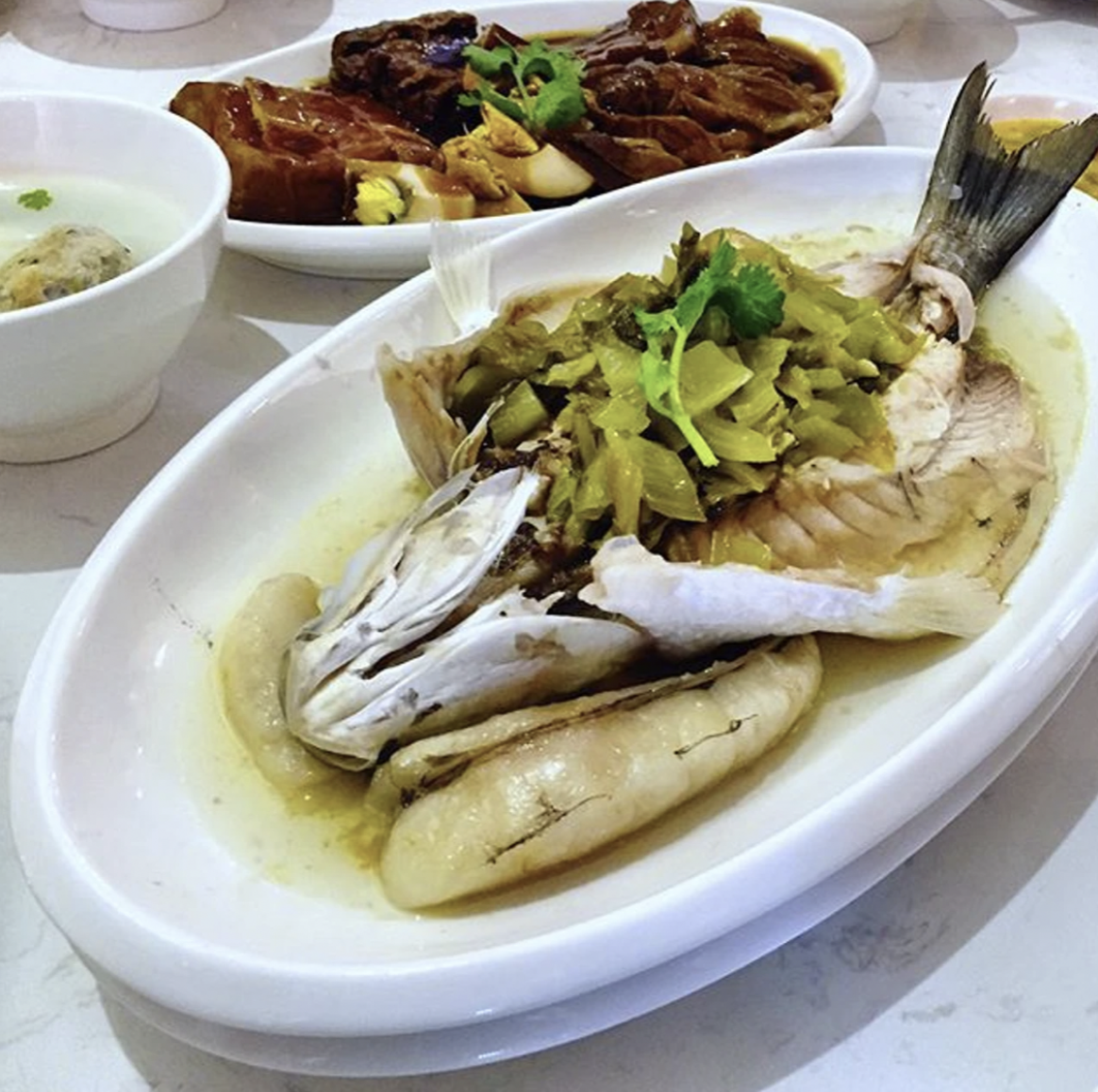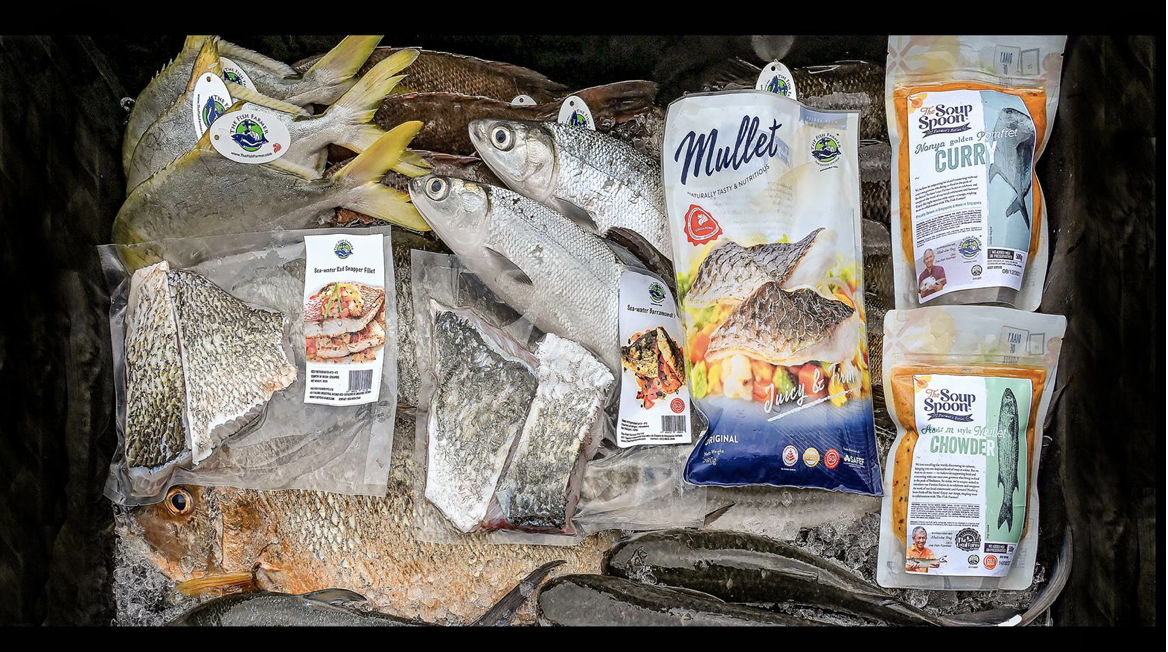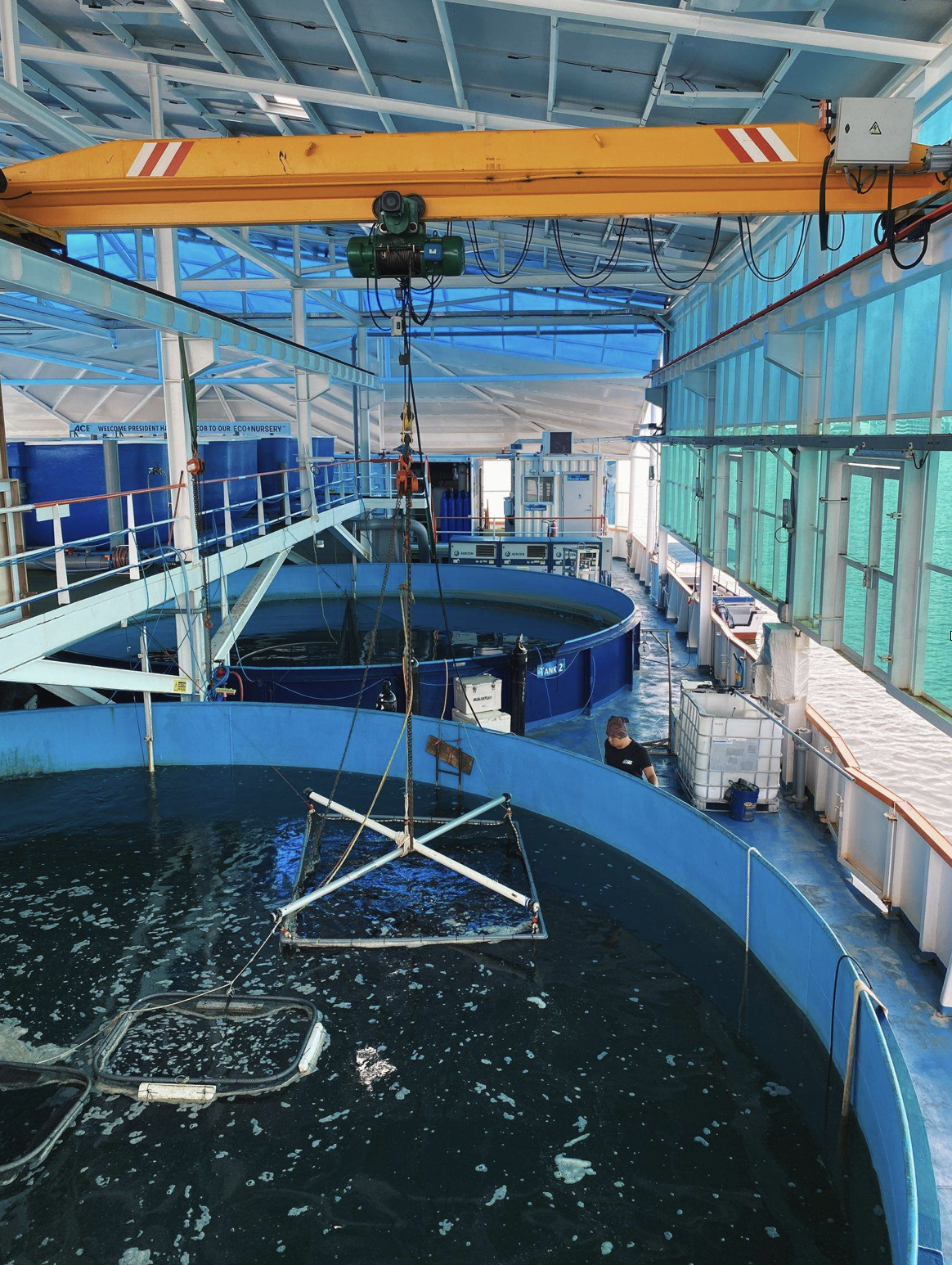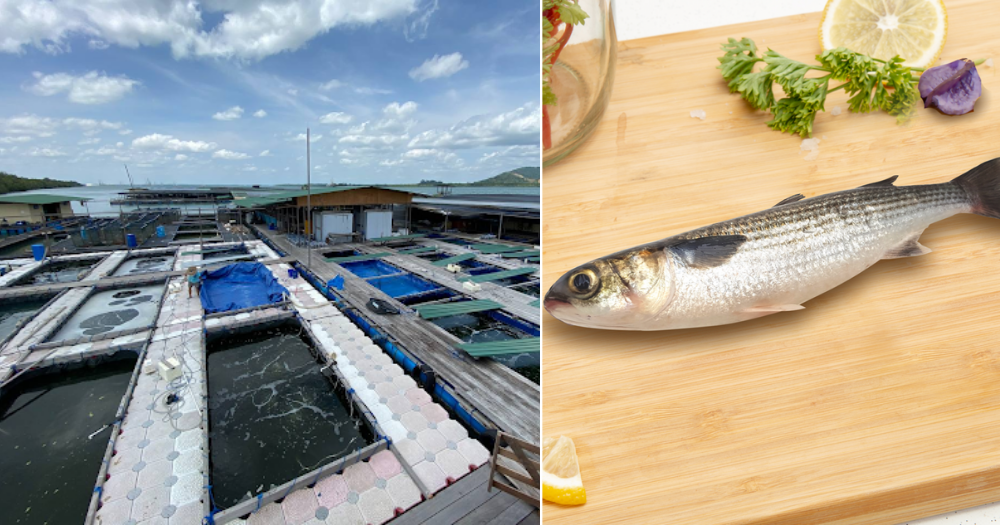Besides making Singaporeans change the way we live, the Covid-19 pandemic also added urgency to improve Singapore's readiness to cope with future disruptions.
One of which is to strengthen food security for Singaporeans.
That can be achieved by spreading our eggs across more baskets by diversifying our food import sources, growing overseas, and producing food right here at home.
Take a closer look when you walk around the supermarkets next time, you will already notice a wide variety of produce farmed in Singapore, including fresh fish.
Mullet farmed in Singapore
Mullet is an example of seafood that is produced by sea-based farms in Singapore. It’s somewhat underrated, as compared to many other prized fish such as pomfret and grouper.
Mullets are nutritious, high in Omega 3 fatty acids and vitamins B6 Niacin. They can also be prepared in many ways -- you can steam, grill and pan-fry.
A classic dish that some might be familiar with is the Teochew steamed mullet with salted vegetables.
 Photo of Teochew steamed mullet with chai por by Ian Low on Burpple.
Photo of Teochew steamed mullet with chai por by Ian Low on Burpple.
What’s better is that they are relatively affordable as compared to other fish, selling at around S$10 or less these days.
If faced with another unforeseen supply chain disruption (touch wood, of course), one would agree that it will be ideal to still have fish that are fresh, nutritious, and easy on the pocket. Right?
Importance of sustainable aquaculture
Today, Singapore has 110 sea-based farms which contributed to over 80 per cent of local fish production in 2021.
Sea-based farms include those which use open-net cage systems and closed containment floating systems located in Singapore’s waters.
Mullet is just one of the many fish farmed locally and to ensure local fish production can continue and feed our future generations, it is important to ensure the farming practices are sustainable.
 Other fish farmed in Singapore waters include snapper, seabass, and pomfret. Image via SFA.
Other fish farmed in Singapore waters include snapper, seabass, and pomfret. Image via SFA.
That means fish farms have to pay close attention to the farming environment such as the water and seabed quality.
In doing so, farms can ensure the fish are growing well so that their hard work will not go to waste and consumers can continue to enjoy fresh, nutritious and affordable fish.
It is also of utmost importance to ensure farming does not adversely impact the wider marine environment as they are home to other wildlife too.
Unfortunately, fish farming in the open seas of Singapore will be more challenging in light of climate change.
An adjunct senior fellow at Nanyang Technological University’s S. Rajaratnam School of International Studies, Paul Teng said aquaculture is most vulnerable to the effects of climate change as extreme weathers will have an impact on the sea water quality, CNA reported last year.
Warmer water temperatures may promote bacterial growth, for example.
Besides external environmental factors, certain farm management practices can also degrade water and/or seabed quality.
For example, feeding non-pelleted feed such as bread or bycatch (fish that are caught by accident) to the farm’s fish has a higher chance of worsening the seabed or water quality.
Bycatch may also carry diseases which can be transmitted to the farmed fish which eat them.
Uneaten bread when soaked in the water for a long period of time can reduce the amount of oxygen in the water as it breaks down. Uneaten bread can accumulate on the seabed, deteriorating its condition.
While feeding bread to fish is quite a prevalent practice, fish do not digest bread well. In addition, fish may not get much nutrients from soaked bread. Without proper nutrition, fish can be more prone to diseases or experience deformities.
However, many farms still prefer using such non-pelleted feed as the immediate costs are low. What they do not realise is that the costs in the long run can be higher as the practice worsens the condition of their farming site and limits the amount and type of fish they can farm.
On the other hand, farms which choose pelleted feed, which typically costs more than non-pelleted feed, are less likely to face such woes.
Pelleted feed is made using ingredients that provide the fish with essential nutrients such as protein and micronutrients like vitamins and minerals. Other than providing a more balanced diet, pelleted feed is usually more water stable hence it reduces negative impact on the environment if they are dispensed periodically, allowing farms to better sustain food production in the long run.
Paying attention to the type of feed is just one aspect of sustainable aquaculture. Farms also need to look into catering to the needs of different farmed fish species and their growth stages, and protecting themselves from environmental threats such as algal blooms by enhancing their farming systems.
For example, they can consider switching to closed containment systems, which is a more controlled farming space, to better protect the fish from changing environmental conditions in the sea, as compared to open-net cage systems.
Here’s an example of what a closed containment system looks like:
 Photo of a closed containment system which is situated on the sea but farms can control the farming conditions such as temperature and oxygen in these “isolated tanks”. Photo via Aquaculture Centre of Excellence - ACE/Facebook.
Photo of a closed containment system which is situated on the sea but farms can control the farming conditions such as temperature and oxygen in these “isolated tanks”. Photo via Aquaculture Centre of Excellence - ACE/Facebook.
Helping fish farms to achieve sustainable aquaculture
Sustainability can be a rather new concept, especially to long-time farmers who are used to the old practices that have worked well for them.
But if farms do not make the switch to sustainable aquaculture, they may have an even harder time in the future. Given Singapore’s space constraints, it is also important to maintain the farming sites well so that they remain productive in the long run.
To help farms improve their aquaculture practices, SFA has a number of resources to support farms on this issue.
For example, farms can adopt the Singapore Standard Specification for Good Aquaculture Practice (SS 670:2021) which includes guidelines for different aquaculture systems in Singapore.
A list of technical resources is also available on SFA’s website which includes tips for successful fish spawning, how to set up a Recirculating Aquaculture System (RAS) technology for hatchery production, and how to breed jade perch.
Farms can also tap on SFA’s S$60 million Agri-food Cluster Transformation Fund for co-funding support to adopt advanced farming systems to be more productive, sustainable and climate-resilient.
As consumers, we can support by buying fish from local farms, especially those which have adopted sustainable aquaculture practices.
This sponsored article by SFA makes the writer appreciate local fish farmers more.
Top image by Julia Yeo and Tankfullyfresh
If you like what you read, follow us on Facebook, Instagram, Twitter and Telegram to get the latest updates.
